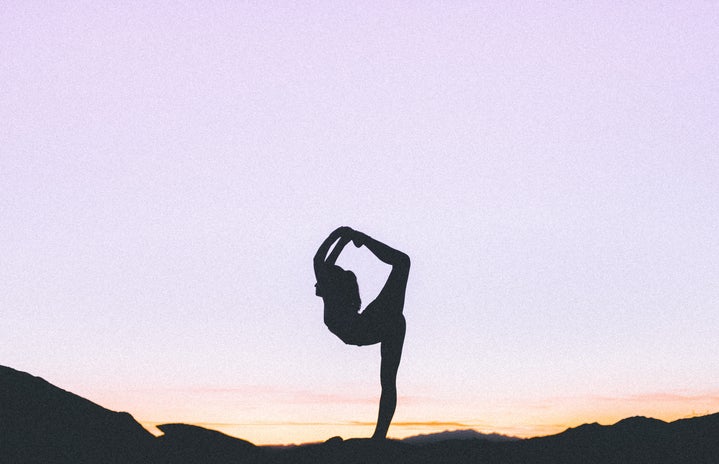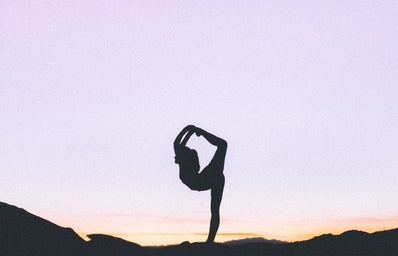People who menstruate have it rough. Sometimes it feels like we’re playing the game of life in hard mode, while everyone else who doesn’t have to menstruate gets cheat codes. The truth is, most people don’t know the whole story about periods. Sure, in school they teach you that menstruation, the vaginal bleeding that occurs at the end of the menstrual cycle, is the result of an uterus shedding its lining in addition to the unfertilized egg when pregnancy does not take place. But the menstrual cycle is a crazy cocktail of hormones, so it affects your body in a lot more ways than people are usually aware. Here are some not-so-fun facts about periods to stay informed and battle the stigma around this natural (albeit inconvenient) phenomenon:
- Periods come with regular side-effects
-
There are a myriad of symptoms that accompany menstruation, and while every period is a different story, there are some recurrent side-effects that a lot of menstruating folk experience in common. Your period might make you crave sugary, high-fat, high-calorie food (like chocolate or sweets) because of hormone fluctuation; since these kinds of food are also associated with a reward system, researcher Julia Hormes believes people might subconsciously crave them in response to the stress of the oncoming bleeding. The two main hormones that rule over your menstrual cycle are estrogen and progesterone, both of which have an impact “on nearly every organ system in the body: bone, skin, eyes, hair, immune activity, digestion, brain, blood, other hormone systems and of course, reproduction.” By the way, since your hormones are all over the place, it is normal to experience a higher sex drive. Breast tenderness is also a common symptom: a surge in estrogen and progesterone “leads to enlarged breast ducts and swollen milk glands,” resulting in soreness and swelling of the breasts.
- Know your history: the sanitary pad
-
Before there were pads as we know them today, people used cloth rags that they would wash every time they had their periods; however, concerns about bacterial contamination from inadequately cleaning these reusable products led to the creation of a menstrual hygiene market. The first disposable menstrual pad was thought up by nurses in France in the late 19th century, and these were made from wood pulp bandages, since they realized that cellulose, which is the main component of plant cell walls, was a lot more absorbent than cloth. These pads did not become commercialized and available for purchase until 1896, and even then, there was a huge stigma around buying pads, so it was not a regular activity until the 1920s. In North America, it was Kotex that introduced the first sanitary napkins, manufactured from left-over war bandages and sold from 1918 onwards. Leona Chalmers patented and produced the first menstrual cup in the 1930s. The first applicator tampon, made out cardboard and cotton, was created by Earle Hass in 1931. Shortly after, Gertrude Tendrich bought the patent from him in 1933 and started the Tampax company. In 1969, Stayfree launched into the market the first maxi-pads with adhesive strips on the underside. Nowadays, menstruating folk have a wide variety of more eco-friendly, reusable options, like menstrual cups made out of silicone and period underwear.
- Period cramps are no joke
-
Have you ever felt the throbbing, stinging pain in your lower abdomen that signals the start of your period? This is called dysmenorrhea, and it occurs when a hormone called prostaglandin, involved in inflammation, triggers the contraction of the muscles in your uterus in order to get rid of the lining (which is the gooey, gummy stuff that comes out in addition to the blood) you won’t be needing anymore because you’re not pregnant. Some people barely experience any cramping, but for others, the pain is so intense it actually interferes with their daily activities. The pain, which starts between 1 and 3 days before you get your period, peaks during the 24 hours following the start of it, and usually subsides on the second or third day, can sometimes also cause dizziness, nausea, headaches, and fainting spells. Some ways you can reduce the pain from your cramps at home include:
-Massaging the area
-Physical exercise
-Using heating pads
-Lying on your stomach with a pillow underneath your abdomen
-Avoiding greasy foods and focusing on having healthy meals
-Laying off the alcohol and caffeine
-Ibuprofen
Note: dysmenorrhea is a normal symptom of menstruation but in some cases it can be the sign of an underlying health problem like endometriosis so make sure you check with your ob-gyn if anything is out of the ordinary.
- Period poverty is a real and devastating issue
-
According to a survey conducted by Plan International Canada in 2018, “one-third of Canadian women under the age of 25 say they’ve struggled to afford menstrual products.” To add to this, it is important to remember not everyone who menstruates is a woman. While menstruation is, in fact, a reoccurring biological process in healthy bodies, access to menstrual hygiene products is often limited for homeless, vulnerable, low-income, and marginalized populations. Everyone deserves equal access to menstrual hygiene products because “like toilet paper, soap and water, hygiene products are not optional: they are necessary and essential.” The consequences of lacking affordable sanitary measures can have a deep impact on people’s daily lives.
At McGill, Monthly Dignity has taken the initiative to help facilitate universal menstrual hygiene: two students, Chloé Pronovost-Morgan and Julia Coste, spearhead the not-for-profit corporation, whose goal is to provide menstrual hygiene products to homeless menstruating folk, with a focus on women, in Montreal. To donate, you can click here.
My lovely dad is an ob-gyn and he loves his job, so ever since I was a little girl he’s been making sure I stay in the know about all things concerning the reproductive organs I have and how to keep them healthy. It was him who helped me navigate my first period (because my mom was living in a different country at the time) and although he was just as clueless as I was in regards to which pads to buy when I sent him on an emergency trip to the supermarket, we made it through. There is absolutely no shame to be had in periods and fostering conversation about the subject is an important step in normalizing it. Menstruation is normal and the more informed we ALL are about it, whether you have a period or not, the better.
Information obtained from:
https://www.healthline.com/health/breast-premenstrual-tenderness-and-swellin
https://helloclue.com/articles/culture/a-short-history-of-modern-menstrual-products
https://www.womenshealthmag.com/health/g19991273/period-products-through-the-years/?slide=1
https://www.mayoclinic.org/diseases-conditions/menstrual-cramps/symptoms-causes/syc-20374938
https://www.healthline.com/health/painful-menstrual-period
https://www.cpha.ca/period-poverty-canada-and-around-globe
https://www.globalcitizen.org/en/content/period-poverty-everything-you-need-to-know/

